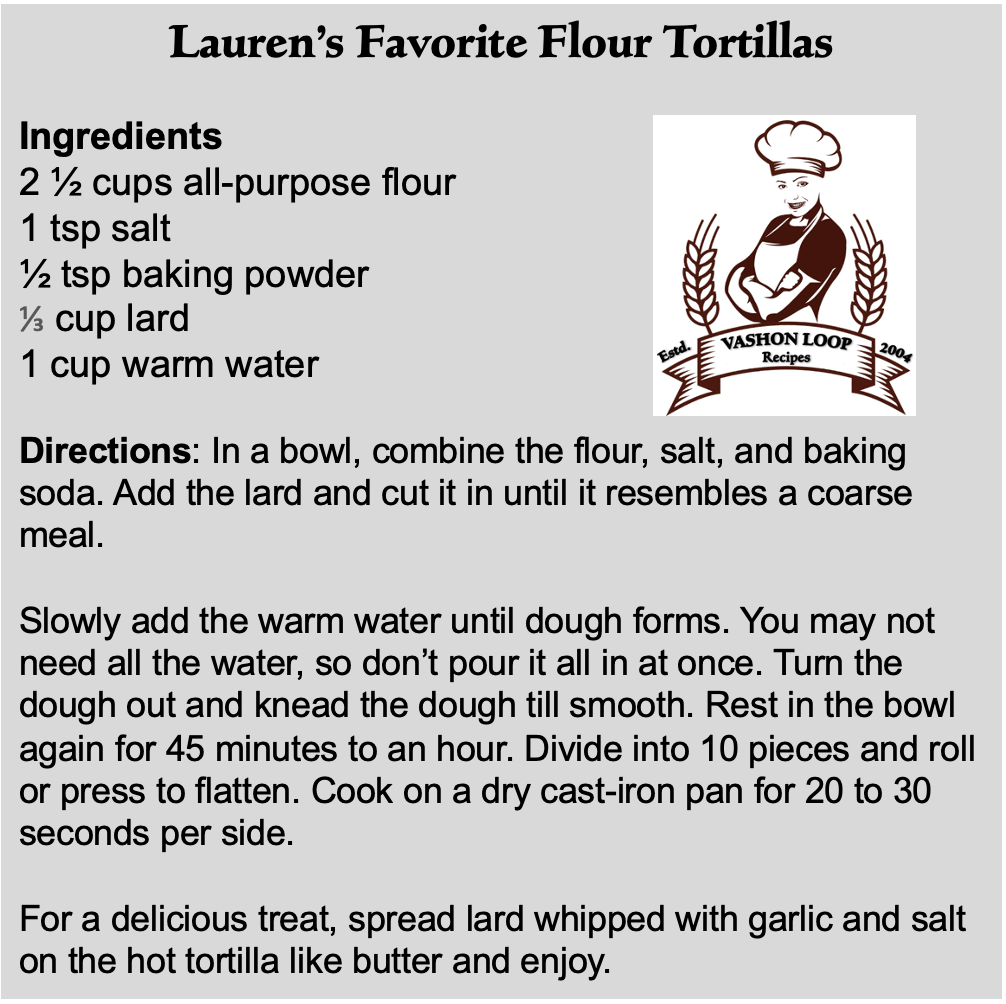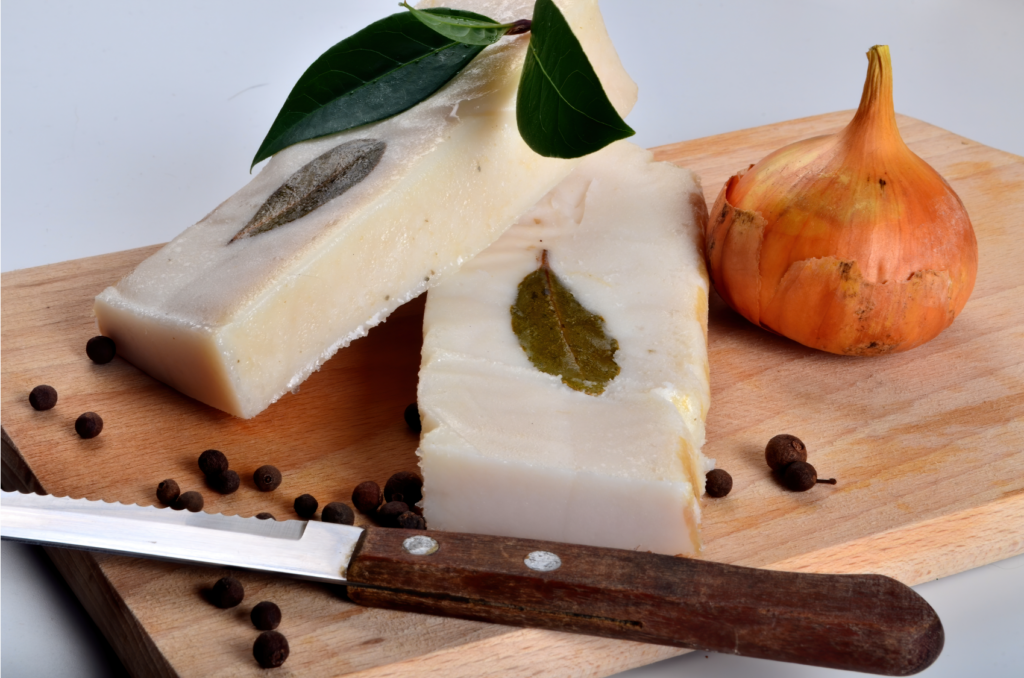By Lauren Garaventa
From the Editors: It’s the season when many of us cook at home more often, and a great time to learn more about new ingredients and kitchen staples. With this in mind, The Loop’s Caitlin Rothermel interviewed Lauren Garaventa (proprietor of The Ruby Brink) to find out more about the dos and don’ts of cooking with lard. We learned a lot, and hope you will, too. Be sure to check out Lauren’s flour tortilla recipe, and remember that leaf lard is sold by the pint at The Ruby Brink.
Would you say that there is a resurgence of interest in using lard for cooking?
Yes! Several things have contributed to the resurgence of animal fats in day-to-day cooking. Lard is a natural fat – it is not expelled from a seed or fruit. It is just melted out of the solids, and is not hydrogenated or processed. The health benefits related to lard have come to the forefront recently with the help of some diets like “Paleo,” “Keto,” and “Carnivore.” These diets encourage the use of animal fats because seed fats cause inflammation and insulin resistance.
Another reason for interest in lard is that people are learning about the importance of using the whole animal when consuming meat products. Pigs are so much more than bacon and pork chops, and using the fat for cooking and baking is a great way to not let any part of the animal go to waste.
How does lard compare as a cooking oil with butter, olive oil, or other oils?
Lard has a high smoke point of 370 degrees. It can stand up to all cooking methods, including deep frying. Once a fat goes past its smoke point, it starts to break down and releases chemicals that erase its beneficial nutrients. Choosing fats with a high smoke point for high-heat cooking is always recommended. Lard is your best natural choice.
Do you think lard gets a bad rap from home chefs? How come?
I think it depends on where the home cook is buying their lard. Grocery store lard is usually mass-produced from corn-fed hogs, hydrogenated to be shelf-stable, and smells really bad. Most pork products from factory farm pigs will taste a bit gamey. However, home cooks who seek out unprocessed lard from well-raised pigs have few complaints.
There isn’t really anything inherently gross about lard. Crisco was invented as a vegetarian alternative to lard, but with what we now know about hydrogenated oils and health, you would think switching back to lard would be an easy choice. Both substances look, smell, and feel the same.
What are your favorite ways to use lard?
Tortillas and tamales are where I always use lard. Pie crust requires lard, in my humble opinion (half-butter, half-lard, to be exact). Many baking applications are better with lard. For baking, I recommend using 100% leaf lard. This fat is from around the kidneys and doesn’t have any meat in it when whole. It is the most mellow-flavored lard, and produces a more tender texture when baking.
I have also whipped lard with salt and chopped garlic and used it on bread for delicious, porky garlic bread. I use lard anywhere that cooking oil is required. Sautéing vegetables, cooking a steak … anything.
What are the best sources for good lard? Are there any lard sources that people should avoid?
Don’t buy hydrogenated lard from the grocery store. Find a local butcher who buys hogs that live outside and are fed a diverse and healthy diet. On Vashon, The Ruby Brink always has rendered leaf lard available by the pint in our display fridge. We buy hogs from Pure Country Farm in Moses Lake, WA and render the lard in our shop.
What is the best way to store lard?
Rendered lard keeps for a year in the fridge and indefinitely in the freezer.


